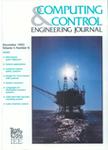版权所有:内蒙古大学图书馆 技术提供:维普资讯• 智图
内蒙古自治区呼和浩特市赛罕区大学西街235号 邮编: 010021

作者机构:Univ Oxford Invensys Univ Technol Ctr Adv Instrumentat Oxford England
出 版 物:《COMPUTING & CONTROL ENGINEERING JOURNAL》 (Comput Control Eng J)
年 卷 期:2001年第12卷第4期
页 面:169-178页
核心收录:
主 题:credible sensed data intercommunication predictive control limp-home features Manufacturing and industrial administration Production engineering computing data fusion formal verification auxiliary variables SEVA data Instrumentation three-term control self-validating field instruments sensor fusion stable control Sensor fusion control loop Optimal control cost-effective validation Control technology and theory Sensing devices and transducers PID regulator Formal methods model predictive controller precise actuation serviceable unit processes MPC model Transducers and sensing devices production control Control engineering computing device level change detection plant validation standard metrics Control in industrial production systems Industrial applications of IT Signal processing and detection actuator level Production management safe operation
摘 要:Effective production requires serviceable unit processes, under stable control with credible sensed data and precise actuation. Validation of these components is not just an aid to safe operation, but can also enhance the availability of the plant. Cost-effective validation uses standard metrics for the intercommunication of results via a network and starts at the sensor and actuator level. In particular, greater availability comes from limp-home features that provide a degree of operability even in the presence of faults. This can be achieved at the device level, by adjusting a loop s PID regulator, by using auxiliary variables and data-fusion, or by the reconfiguration of a model-predictive controller (MPC). Examples are given of self-validating (SEVA) field instruments and the effect of adjusting a control loop using SEVA data. Plant validation is a combination of SEVA devices and of change detection based on the residuals derived from an MPC model.